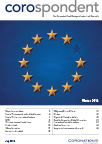
Quarterly Publication - July 2016
Walgreens Boot Alliance - July 2016
The global pharmacy giant Walgreens Boots Alliance (WBA) recently made headlines with its plans to create the largest pharmacy chain in the US through the acquisition of its competitor Rite Aid.
We have found compelling investment value in WBA for some time, and have built a sizeable holding across some of our funds. Even without the Rite Aid transaction, the company offers a high-quality investment that is trading below our assessment of its intrinsic value, and which should see substantial operational gains over the long term.
Background
Following the two-stage acquisition of Alliance Boots by Walgreens, WBA was formed in December 2014.
The new group has three principal divisions:
Retail Pharmacy USA (75% of group profits): Walgreens is the second largest US retail pharmacy chain with over 8 000 locations across the US.
Retail Pharmacy International (15% of group profits): Boots, the retail pharmacy chain with 2 500 stores across the UK, is the primary contributor to this division’s profits. This business is fairly mature and has attractive levels of profitability.
Pharmaceutical Wholesale (10% of group profits): Alliance Healthcare is a pan-European pharmaceutical wholesale business that operates distribution centres throughout Europe, delivering drugs to pharmacies and hospitals. This business is also mature and has the low margins typical of a wholesaler.
Management
While on paper Walgreens acquired Alliance Boots, the deal has the hallmarks of a reverse takeover. Upon consummation of the deal, the Alliance Boots management team, led by the Italian Stefano Pessina, assumed leadership of the combined entity. We rate Pessina and his team as one of the best in our investment universe. Pessina has a unique strategic vision and is a patient and disciplined dealmaker, with an incredible track record of value creation over almost 40 years through both mergers and acquisitions (M&A) and operational turnarounds. In 1977 he took over his family’s small, struggling Italian pharmaceutical wholesaler. Since then he has concluded over 500 M&A deals¹, first building a pan-European pharmaceutical wholesaler, and subsequently a retail pharmacy business focused primarily on the UK and the US. Notable deals include:
- a merger with the French pharmaceutical wholesaler Santé in 1991;
- a merger with the UK pharmaceutical wholesaler Unichem in 1997;
- a merger with Boots in 2006 and the delisting of Alliance Boots in 2007 in partnership with KKR;
- a merger with Walgreens in a two-step transaction (2012, 2014); and
- the possible acquisition of Rite Aid, the third-largest US pharmacy chain (awaiting Federal Trade Commission approval)
Today, Pessina owns a 13% stake in WBA worth $12 billion. He is self-avowedly a dealmaker: “I am not a retailer – I have never run a store, I have never understood the full details of how you can make a consumer satisfied … To build a company, to do deals, to motivate people: this is what I am able to do.” He has assembled a formidable team under him, led by Alex Gourlay (head of Walgreens and Boots) and Ornella Barra (head of Alliance Healthcare). The team that is now running Walgreens is the same one that achieved phenomenal success transforming Boots in the UK. Between 2006 and 2014, in a very tough revenue environment (revenues per script declined 16% due to reimbursement² cuts by the NHS), profit margins increased from 7.6% to 12.4% and profits almost doubled. This is largely attributable to cost savings, and a wildly successful health and beauty strategy built around the Boots No7 brand.
The opportunity at Walgreens
We believe that the fundamental backdrop at Walgreens is favourable:
- The ageing US population – 10 000 people a day are turning 65 and becoming eligible to join Medicare3– should continue to drive low single-digit growth in scripts as the elderly consume significantly higher volumes of pharmaceuticals than younger generations.
- Ongoing generic conversions4 should continue to support profitability. While some 85% of scripts dispensed in the US are already generics, the generic conversion pipeline over the next few years should provide a tailwind to pharmacy profitability. Pharmacies earn higher profits on generic drugs than they do on branded alternatives.
- Following a brief period of generic inflation over the last few years due to disruptions in the generic supply chain and a backlog of new generic approvals by the US Food and Drug Administration (FDA)5, generics have more recently resumed their typical deflationary trend. This will support pharmacy profitability.
Offsetting these tailwinds is ongoing reimbursement pressure. There is no shortage of pharmacies in the US and as they all compete to grow script volumes, there is a general downward trend in the level of reimbursement paid to them. We believe that Walgreens is reasonably well positioned in this environment. As one of two ‘at scale’ pharmacy chains, they are best positioned to leverage their size to trade lower reimbursement for higher script volumes. Given the fixed-cost nature of pharmacy operations, if done correctly, this trade-off can deliver positive results as more scripts flow through the store network. The new management team is also well versed in operating in the UK’s intense reimbursement environment and should be able to offset headwinds through efficiencies and cost savings.
We believe that under the leadership of Pessina there are substantial opportunities to improve the operational performance of what we believe was an undermanaged business. (Pessina is the first external CEO appointment at Walgreens in more than 100 years!) Margins are considerably lower than its closest peer, CVS. There is now a clear strategy to grow script market share, cut costs and improve the mix in the front-end of their stores.
There are early signs of success evident at Walgreens, with substantial cost savings and merger synergies already delivered. The longer-term opportunity lies in continued operating efficiency improvements and transforming the health and beauty offering at Walgreens by implementing some of the learnings from Boots. This is a longer-term opportunity that will take time to deliver results.
The pending Rite Aid acquisition
WBA is in the process of acquiring Rite Aid, the third-largest stand-alone US retail pharmacy chain with approximately 4 500 stores. We believe that the deal makes both financial and strategic sense and that WBA is acquiring Rite Aid at an attractive price. The Rite Aid store base has a complementary geographic footprint with Walgreens and will in effect ‘complete’ the Walgreens store base, giving it a nationwide footprint.
Rite Aid has been challenged as a stand-alone business and its margins are half those of Walgreens. Significant debt incurred prior to the 2009 financial crisis and the associated cash flow constraints have constrained management’s ability to run the business optimally. In addition, Rite Aid’s lack of scale relative to its two larger peers has rendered it less competitive when negotiating reimbursement and in pharmaceutical procurement. We believe that by combining with WBA, there are significant synergies that WBA can unlock by using its superior size to negotiate better procurement and reimbursement terms.
The deal is not without challenges. It is subject to approval from the Federal Trade Commission, which may still block the deal on anticompetitive grounds. We believe anticompetitive concerns can be assuaged through manageable store divestitures. WBA has confirmed that it is willing to dispose of up to 1 000 stores, but there remains a risk that the deal does not get approved.
Another challenge is that the Rite Aid store base is underinvested and in poorer locations than rivals Walgreens and CVS. WBA will have to invest in the store base to bring it up to acceptable standards.
While we believe the acquisition of Rite Aid offers a compelling opportunity to create sustainable value, we believe that WBA is an attractive investment with or without Rite Aid, and our investment case is not premised on the Rite Aid deal.
1 The number could be as high as 1 500 but because many of the deals were concluded in unlisted entities it is not possible to verify the actual number.
2 Reimbursement is the term used to refer to the amount that a pharmacy is paid for dispensing a script. In the UK, the NHS is the sole payer, whilst in the US pharmacies negotiate reimbursement with the pharmacy benefit managers.
3 Medicare is the US government healthcare plan for those 65 and older.
4 The process whereby a branded pharmaceutical drug loses patent protection and has to compete with generic copies of the drug, normally sold at a fraction of the price of the branded drug.
5 The regulatory entity that oversees the pharmaceutical industry.
This article is for informational purposes and should not be taken as a recommendation to purchase any individual securities. The companies mentioned herein are currently held in Coronation managed strategies, however, Coronation closely monitors its positions and may make changes to investment strategies at any time. If a company’s underlying fundamentals or valuation measures change, Coronation will re-evaluate its position and may sell part or all of its position. There is no guarantee that, should market conditions repeat, the abovementioned companies will perform in the same way in the future. There is no guarantee that the opinions expressed herein will be valid beyond the date of this presentation. There can be no assurance that a strategy will continue to hold the same position in companies described herein.
 South Africa - Institutional
South Africa - Institutional


